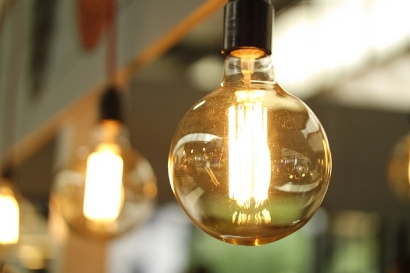
The 2023 Energy Efficiency Impact Report, released recently by the Alliance to Save Energy, American Council for an Energy-Efficient Economy (ACEEE), and the Business Council for Sustainable Energy (BCSE), quantifies recent progress on energy efficiency and points to critical opportunities ahead as consumers face increasing energy costs.
The second edition of the report underlines that efficiency investments since 1980 have reduced annual energy expenditures in the United States by nearly $800 billion and driven down energy consumption per household by 16%. By prioritizing energy efficiency investments through implementation of recently passed federal legislation like the Inflation Reduction Act, states and federal agencies can cut energy costs for American families, improve energy resilience, and reduce carbon emissions.
“We’ve reduced energy waste dramatically for years, but in the face of the climate crisis and rising energy costs, we have so much more to do,” said ACEEE Executive Director Steven Nadel. “This report shows that we can build on our progress with energy efficiency to make an even bigger impact ahead. The recent federal climate law gives everyone from state and local officials to businesses to individual households a huge opportunity to cut costs and emissions through efficiency.”
The report underscores the powerful impact of energy efficiency as a driver of economic development and job creation. Through investments in energy efficiency since 1970, the U.S. has decoupled energy consumption and economic growth – increasing energy productivity by 170%. Today, 40% of all energy jobs in the U.S. relate to energy efficiency – totaling 2.2 million workers in 2021. The report also reinforces energy efficiency as a key climate solution: in 2021, the U.S. would have produced 78% higher carbon emissions without the energy efficiency investments already in place.
"This report showcases both the progress that has been made and the promise of what is possible when it comes to energy efficiency,” said Paula Glover, President of the Alliance to Save Energy. “Whether it's reducing carbon emissions, decreasing American's energy bills, increasing grid reliability, or a host of other benefits, energy efficiency has proven to be a dramatically underappreciated and powerful resource."
The Energy Efficiency Impact Report outlines specific opportunities to further cost savings and emissions reduction through energy efficiency, such as adopting stronger energy codes for new buildings and building performance standards for existing ones. Further adoption of industrial efficiency measures can continue to drive down costs for firms and residential efficiency programs can increase the comfort and affordability of homes. Emerging technologies such as zero-emission transit buses and zero net energy buildings are still in the early phases of adoption but will play a role in advancing an equitable and low-carbon future.
“As American families face winter storms and rising home energy costs, energy efficiency is a critical resilience solution that reduces the potential of blackouts and improves energy security,” said BCSE President Lisa Jacobson. “This report reveals that investments in energy efficiency leads to real and cost-effective improvements for energy reliability, emissions reductions, and affordability. Prioritizing energy efficiency is central to advancing the energy transition in America and meeting our climate goals.”
Other notable findings from the report include:
The Energy Efficiency Impact Report, first published in 2019, features up-to-date figures on energy efficiency investments and impacts across the buildings, transportation, and industrial sectors.

